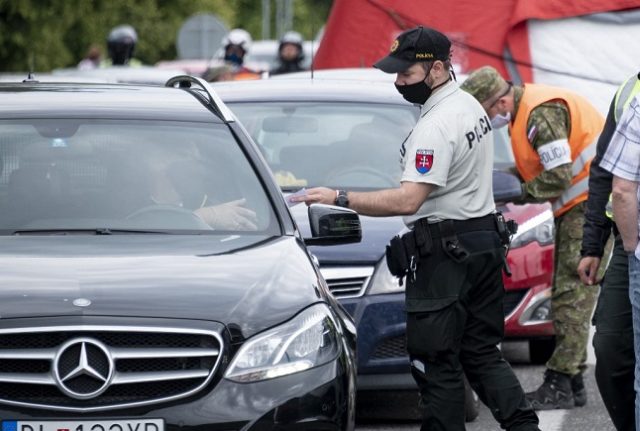What are the rules for travel between Austria and neighbour Slovakia for cross-border commuters at the moment?
Entry to Slovakia from Austria
People who are fully vaccinated against Covid can enter Slovakia from Austria for any reason, without needing to quarantine or present a negative test result — although you need to do a pre-travel registration. Note that proof of recovery is not accepted for entry.
If you are a commuter, you also have the option to enter Slovakia with a negative PCR test result no older than seven days (but not an antigen test) even if you are not fully vaccinated. Slovakia considers you to be a commuter if you have permanent or temporary residence in Austria (or another EU country) and work in Slovakia, or vice versa, or if you live less than 100 km from the Slovak border regardless of your purpose of travel.
Austrian or Slovak PCR tests are accepted, but it’s recommended to have the result in either English or Slovak.
If you are entering Slovakia using a PCR test rather than proof of vaccination, you will need proof from your employer that you are a cross-border commuter in case you are asked to show this.
You also need to register on the Slovak government website before you travel using the eHranica registration form. If you are fully vaccinated, you only need to register on this website once every six months (choose the option “I am a fully vaccinated person and I have proof of this”).
If you are a cross-border commuter entering with a PCR test you need to register every month (choose the option “I am not a vaccinated person”; then under the heading “I have an exemption from home isolation, choose the option “I have an exception that requires a negative PCR test result not older than 7 days”, and under Additional entry conditions choose the option “I have a certificate stating that I have an employment relationship, a similar employment relationship…”).
Only a very few kinds of workers are exempt from this registration, primarily transport employees such as bus or truck drivers.
Entry to Austria from Slovakia
People who regularly commute to Austria either for work, study, or for family purposes have a special exception to the general travel rules. If you travel between the two countries at least once per month for one of these reasons, you can enter Austria as long as you have proof of 3G (full vaccination, recent recovery from Covid-19, or a negative PCR test).
Regular commuters may use either a PCR or antigen test. If you cannot meet the 3G criteria, you need to fill out Austria’s pre-travel clearance form before travel and enter quarantine on arrival.
You also need to have proof of your reason to travel in case this is requested. This could include confirmation from your employer that you need to commute for work, for example.
For non-commuters entering Austria from Slovakia, as with most EU/EEA countries, the 2G+ rule applies.
This means that in order to enter Austria from Slovakia, as a general rule you need proof of full vaccination (two doses, or one dose if you got the Johnson & Johnson vaccine) or medical proof of recovery from Covid-19 within the last 180 days.
As well as this, you also need either proof of a booster dose or a negative PCR test. If you have had a full course of the vaccination and have also recovered from Covid in the last 180 days, you do not need a booster or negative test.
Useful Links
The Slovak government’s Covid information portal
Austria’s Chamber of Commerce has a page (in German) to stay updated on the situation for commuters
The Chamber of Commerce has also created a draft confirmation of employment letter in German, Slovak and English. Download it here
Austria’s entry rules are summarised by the Austrian Health Ministry
The portal to register your travel to Slovakia, if needed, is called eHranica and an English-language version is available here.
The Slovak regulation which sets out the exemption for commuters (in Slovak)
The information in this article was correct to the best of our knowledge at the time of publication, but The Local cannot provide legal advice and we recommend confirming information with official authorities before you travel.



 Please whitelist us to continue reading.
Please whitelist us to continue reading.
Hello, thank you very much for this article 🙂